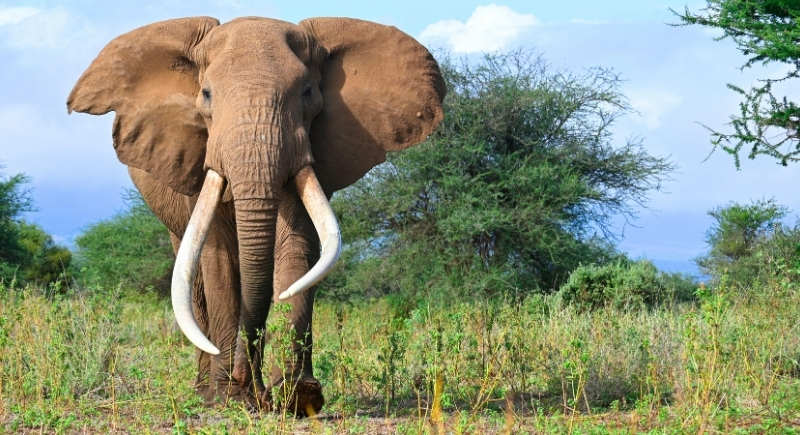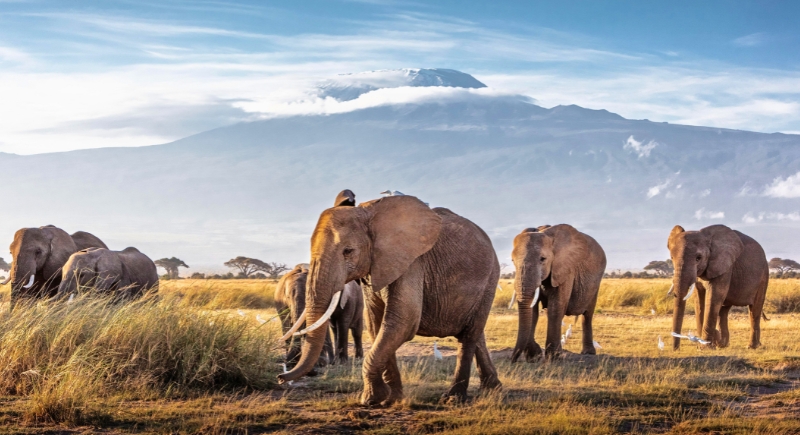What Is a ‘Super Tusker’ and Why Are They on the Brink of Extinction?
A super tusker isn’t just any elephant. These are bulls with tusks so massive that each one weighs at least 100 pounds. At one time, they were a regular part of the African landscape, but poaching and hunting changed that. Today, it’s estimated there are fewer than 30 left across the entire continent, and in Kenya’s Amboseli ecosystem, the number is thought to be closer to ten. Some researchers believe there may be more hiding in denser habitats, but no one can argue that the population is shrinking fast.
These elephants are part of an important gene pool that passes along the traits that allow tusks to grow to enormous sizes. But history hasn’t been kind to them. During the poaching crisis of the 1990s and 2000s, large-tusked elephants were the first to go, because the bigger the ivory, the bigger the payday. Years later, trophy hunters still pay significant amounts for the chance to shoot one of these animals, particularly in countries where the practice remains legal.
More Than Just Big Tusks

Image via Pexels/Marri Shyam
Super tuskers matter socially and genetically. Older males, who carry the heaviest tusks, also keep younger bulls in check by calming their aggression and teaching them how to behave. Elephants usually reach their peak breeding years around age 40, but many tuskers don’t live that long because of poaching and other threats. This means losing even a single super tusker is a loss to future generations.
Conservationists point out that these bulls contribute far more to life than they do when dead. A recent study estimates that one elephant can generate over $1.6 million in tourism revenue across its lifetime. Compare that with the fees trophy hunters pay for a license in Tanzania, and the math doesn’t add up. In Amboseli, elephants are a huge draw for visitors; even though many tourists are equally excited to see any elephant, especially with Mount Kilimanjaro rising behind them.
Tug-Of-War Over Numbers
Depending on who you ask, the count of remaining super tuskers changes dramatically. Some say around ten remain in Amboseli, while others suggest that up to 30 may still be alive in Tsavo and surrounding areas. Part of the confusion stems from the difficulty in tracking elephants in thick vegetation, and another reason is that not every tusker has been properly documented. In fact, monitoring in Tsavo during the early 2010s revealed 14 super tuskers when people thought they were gone. On top of that, about thirty younger bulls could reach tusker status within a decade if they survive long enough.
Still, those numbers don’t erase the reality that super tuskers are easy targets. They often wander close to community land and can be accustomed to human presence, which makes them less wary of hunters. Some bulls are closely watched by conservation groups to stop them from being killed. Others have died from different threats, like drought, habitat loss, or human conflict. One famous tusker, Tim, for example, died of natural causes in 2020 in Amboseli National Park.
The Bigger Picture of Conservation

Image via Alamy/Susan Schmitz
Protecting these elephants has become a symbol of conservation in East Africa. Kenya outlawed trophy hunting decades ago, while Tanzania still allows it under license. The cross-border movement of elephants means that Amboseli’s most famous bulls can wander into areas where they’re suddenly at risk. This tension has fueled documentaries, petitions, and heated debates about the morality and economics of hunting.
In recent years, drought has dried up waterholes that elephant matriarchs have handed down for generations. Expanding farms and urban development have also cut off migration corridors. For animals that need wide spaces, that squeeze is just as dangerous as a hunter’s rifle.
Super tuskers’ genes carry stories of centuries-old elephants, including one legendary bull from the late 1800s with tusks weighing more than 200 pounds. The next generation may still develop impressive tusks if given the chance to survive long enough. Trophy hunting is one piece of the puzzle, but the bigger picture is how people and elephants can share shrinking spaces in a way that keeps these animals from disappearing forever.